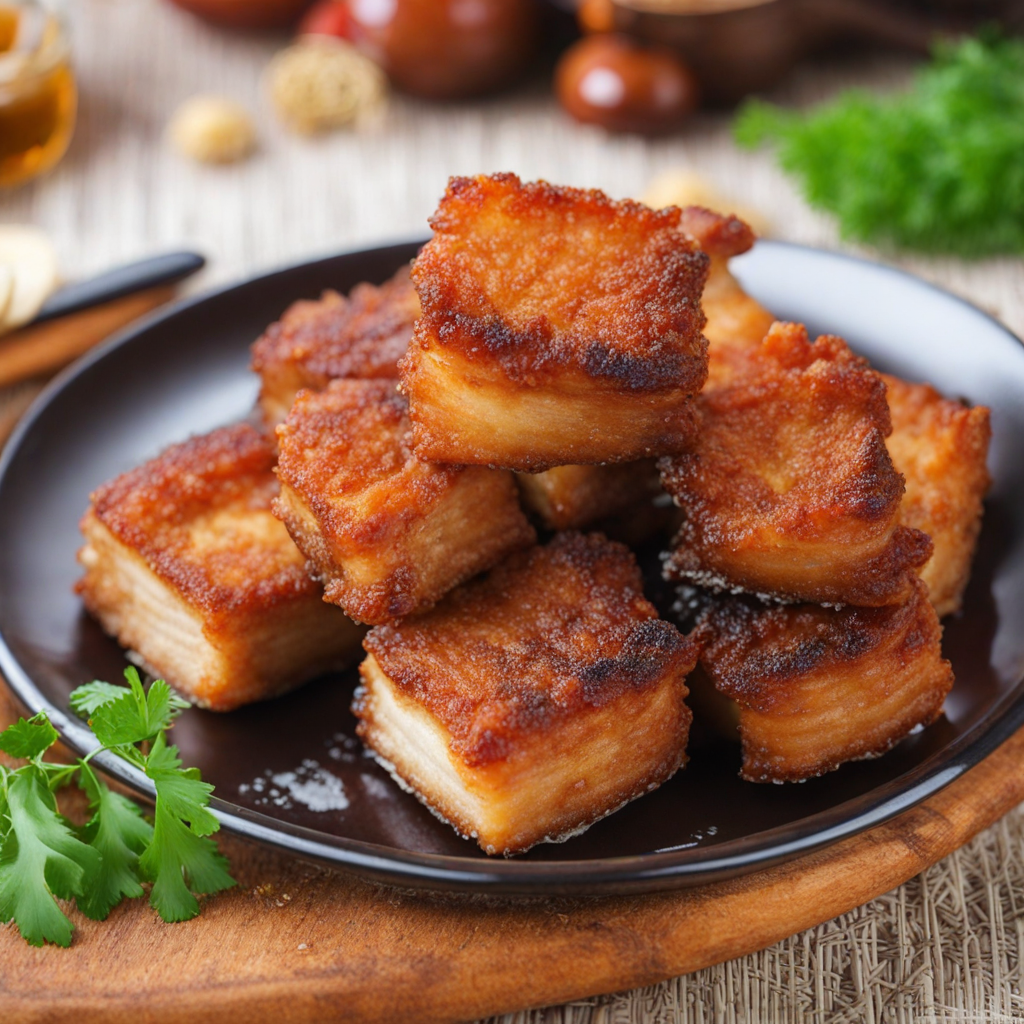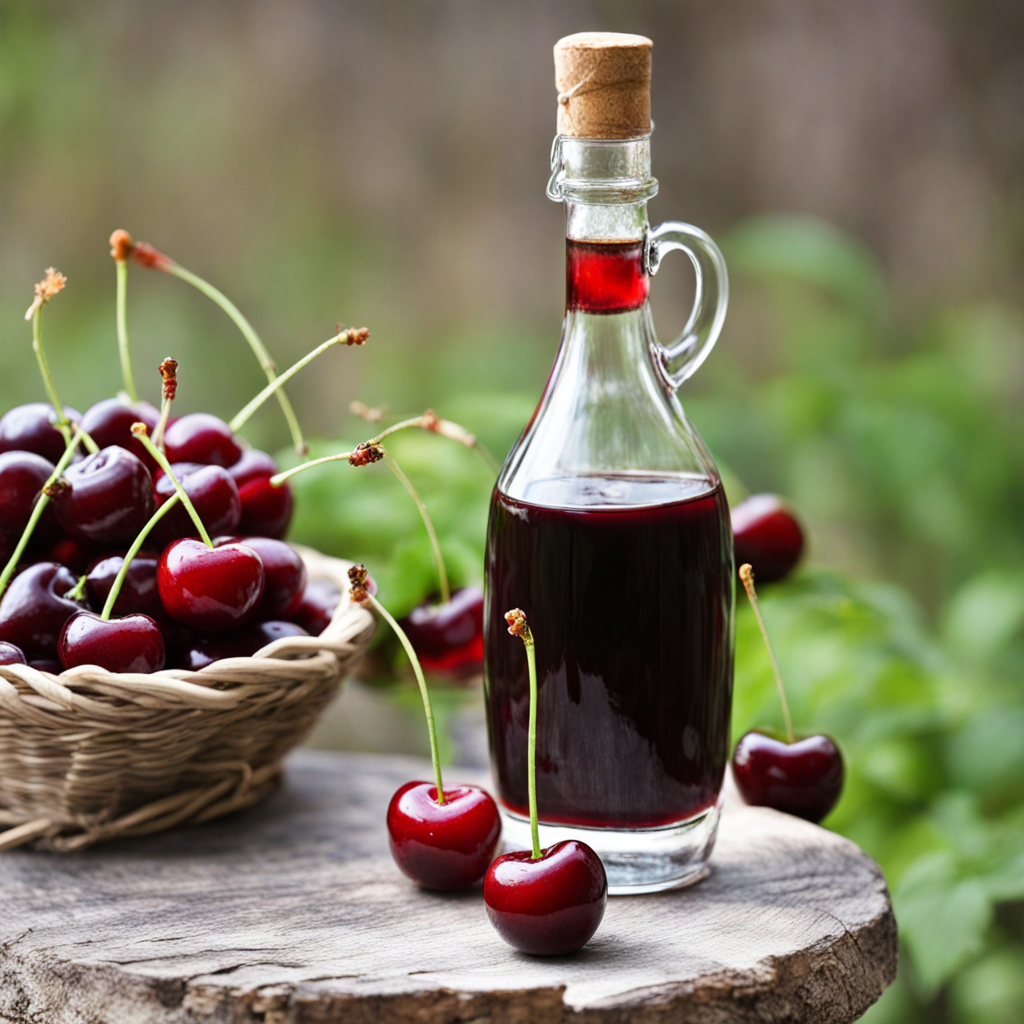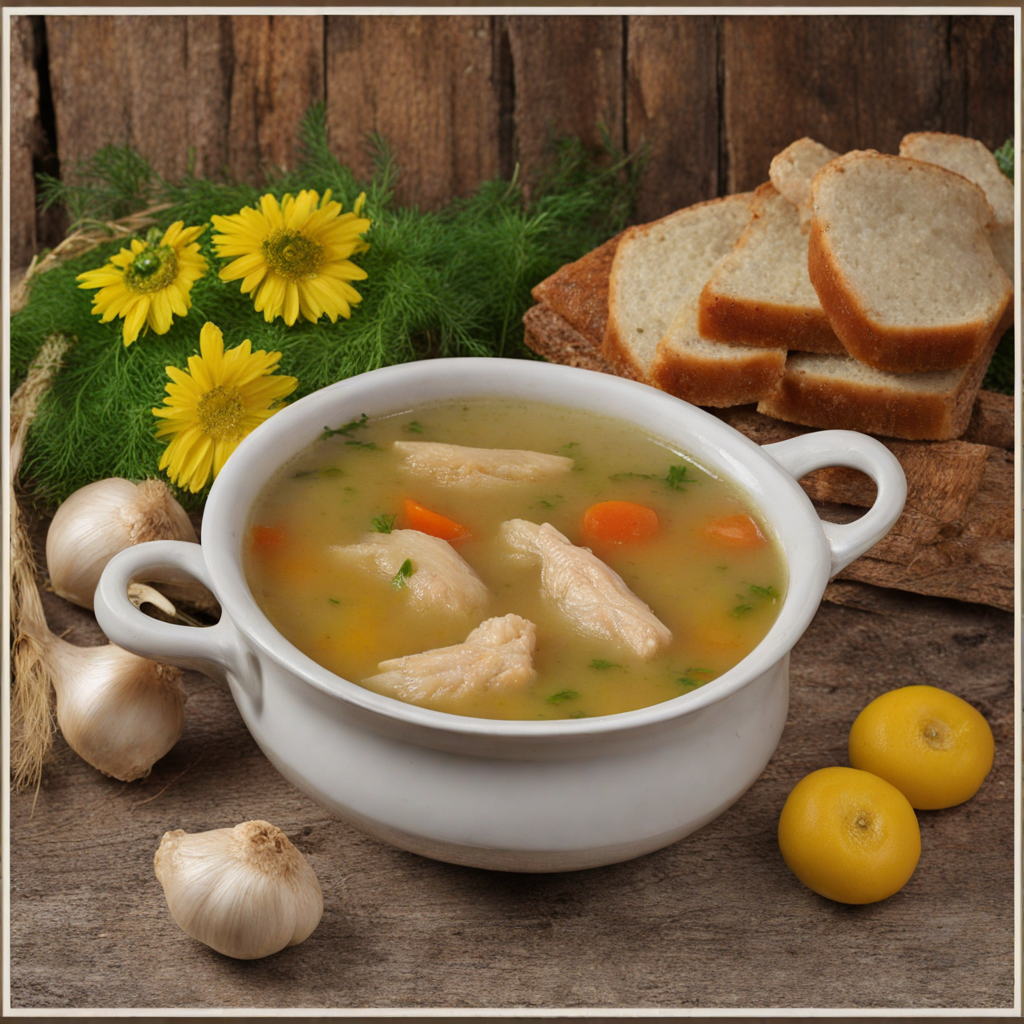Jumări
Jumări, a traditional dish from Moldova, is a delightful representation of the region's rich culinary heritage. Made primarily from pork, this dish involves the slow cooking of fatty cuts of meat, typically the belly or back, which are then rendered down until the fat is fully melted. The result is a crispy, golden-brown exterior that encases tender, flavorful morsels of meat. Often seasoned with salt and sometimes a hint of garlic, Jumări boasts a savory richness that makes it an irresistible treat for meat lovers seeking a new taste experience. The preparation of Jumări is not just about the cooking process; it also holds a cultural significance, often prepared during festive occasions or family gatherings. Traditionally, the dish is served warm, alongside a crusty loaf of homemade bread, allowing the diners to create their own little sandwiches. The contrast of the crispy bits of meat with the soft bread creates a delightful texture that enhances the overall enjoyment of the dish. Pairing Jumări with a glass of local wine or a shot of homemade plum brandy can elevate the experience further, adding a touch of authenticity to the tasting journey. In terms of flavor, Jumări is bold and hearty, embodying the essence of rustic Moldovan cooking. The rich, porky taste is complemented by the crispiness of the fried bits, making it a perfect appetizer or snack. Although it may not be as widely known outside of Moldova, this dish is a must-try for anyone looking to explore the diverse tapestry of Eastern European cuisine. Whether enjoyed at a family gathering or as part of a culinary adventure, Jumări promises to deliver a unique taste that is both satisfying and memorable.
How It Became This Dish
The Culinary Heritage of Жумэри: Exploring Moldova's Traditional Delight #### Origins of Жумэри Жумэри (pronounced "zhumeri") is a traditional Moldovan dish that reflects the rich agricultural heritage and culinary traditions of the region. Its origins can be traced back to the rural communities of Moldova, where the availability of ingredients dictated the local cuisine. Historically, this dish is associated with the region's pastoral lifestyle, where families would rely on the livestock they raised and the crops they cultivated. The primary ingredient of Жумэри is cornmeal, which has been a staple in Moldovan diets for centuries. Corn was introduced to Europe in the 15th century, and its adaptability to various climates made it a popular crop among Moldovans. The use of cornmeal for Жумэри highlights the ingenuity of the local people in utilizing what was readily available to create satisfying and nourishing meals. #### Cultural Significance Жумэри holds a special place in Moldovan culture, often served during family gatherings, festive occasions, and community celebrations. It is more than just a dish; it embodies the hospitality and warmth of Moldovan society. When families gather to prepare Жумэри, it becomes a communal activity, fostering connections and strengthening bonds among relatives and friends. Moreover, Жумэри is often accompanied by a variety of traditional sides, such as sour cream, cheese, or even stewed vegetables. This combination not only enhances the flavor but also reflects the Moldovan ethos of utilizing local produce to create a well-rounded meal. The dish is a testament to the region's agricultural diversity, showcasing the importance of locally sourced ingredients in Moldovan cooking. #### Development Over Time As Moldova evolved through the centuries, so did its culinary landscape. The influence of various cultures, including Romanian, Russian, and Ukrainian, contributed to the adaptation and transformation of traditional recipes, including Жумэри. The dish has seen variations in preparation methods and ingredient combinations, reflecting the dynamic nature of Moldovan cuisine. In the early 20th century, when Moldova was part of the Kingdom of Romania, the culinary influences from the west began to permeate Moldovan kitchens. While traditional recipes remained prevalent, there was a noticeable shift towards incorporating more diverse flavors and cooking techniques. During this period, the use of dairy products became more pronounced, leading to the popular addition of cheese or sour cream with Жумэри. This adaptation not only elevated the dish but also made it more appealing to a broader audience. The post-World War II era marked another significant shift in Moldova's culinary practices. As the country underwent industrialization and urbanization, traditional farming practices began to decline, and many Moldovans moved to cities. This transition affected food production and consumption patterns. While Жумэри remained a beloved dish, its preparation became less frequent in urban households, as busy lifestyles led to a greater reliance on convenience foods. However, the late 20th century witnessed a resurgence of interest in traditional Moldovan cuisine, including Жумэри. With the rise of the national identity movement following the collapse of the Soviet Union in 1991, there was a renewed appreciation for local customs and culinary heritage. Chefs and home cooks alike began to revive traditional recipes, ensuring that dishes like Жумэри remained a vital part of Moldova's cultural identity. #### Preparing Жумэри: A Culinary Tradition The process of preparing Жумэри is a labor of love that often involves the whole family. The dish begins with finely ground cornmeal, which is mixed with water and a pinch of salt to create a thick batter. This mixture is then poured into a hot, greased pan or a traditional wooden mold, known as a "cocă," and cooked until it develops a golden crust. The cooking method can vary; some prefer to fry it in a skillet, while others opt for baking in the oven. Once cooked, Жумэри is typically sliced into squares or wedges and served warm. The dish can be enjoyed on its own or paired with a variety of accompaniments. Sour cream is a common choice, as it adds a creamy texture and tangy flavor that complements the earthy taste of the cornmeal. Additionally, crumbled cheese, such as telemea or feta, is often sprinkled on top, adding a salty richness that enhances the overall experience. #### Modern Interpretations and Global Recognition In contemporary times, Жумэри has found its way onto the menus of restaurants that celebrate Moldovan cuisine, both within Moldova and abroad. As the world becomes increasingly interconnected, there is a growing interest in traditional foods from various cultures, and Жумэри is no exception. Chefs are experimenting with the dish, incorporating international flavors and techniques while honoring its traditional roots. Moreover, as more Moldovan families migrate across the globe, they carry their culinary traditions with them. This has led to a greater appreciation for Жумэри in diverse communities, where it is often prepared during holidays and special occasions as a way to connect with their heritage. #### Conclusion Жумэри is more than just a dish; it is a reflection of Moldova's history, culture, and the resilience of its people. From its humble origins in rural kitchens to its place on modern dining tables, it represents the deep-rooted traditions that define Moldovan identity. As the world continues to discover and celebrate the rich tapestry of global cuisines, Жумэри stands as a testament to the enduring legacy of a nation that values its culinary heritage while embracing the future. Whether enjoyed at a festive gathering or a quiet family meal, Жумэри remains a cherished symbol of Moldovan hospitality and culture, inviting all to savor its simplicity and warmth.
You may like
Discover local flavors from Moldova







